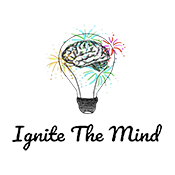-

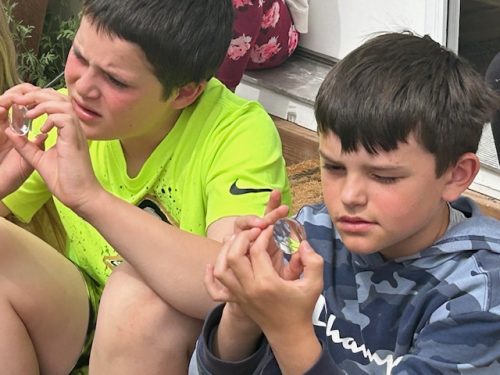 In astronomy camp, kids will learn details about our solar system and our galaxy. We’ll talk with Astrobiologists about their research to find life on other planets. We’ll figure out ways to get humans from Earth to Mars, and how we can sustain life there, which involves some chemistry. Students will learn how a telescope works. They will build one of two different types of simple telescopes—an astronomical and a terrestrial telescope—each with a magnification of 5X. They then experiment with the different telescope designs and determine how the lens combination in each telescope works to magnify an object’s image. At the end of the week, students can take their telescope home so that they can look at the stars.
In astronomy camp, kids will learn details about our solar system and our galaxy. We’ll talk with Astrobiologists about their research to find life on other planets. We’ll figure out ways to get humans from Earth to Mars, and how we can sustain life there, which involves some chemistry. Students will learn how a telescope works. They will build one of two different types of simple telescopes—an astronomical and a terrestrial telescope—each with a magnification of 5X. They then experiment with the different telescope designs and determine how the lens combination in each telescope works to magnify an object’s image. At the end of the week, students can take their telescope home so that they can look at the stars. -

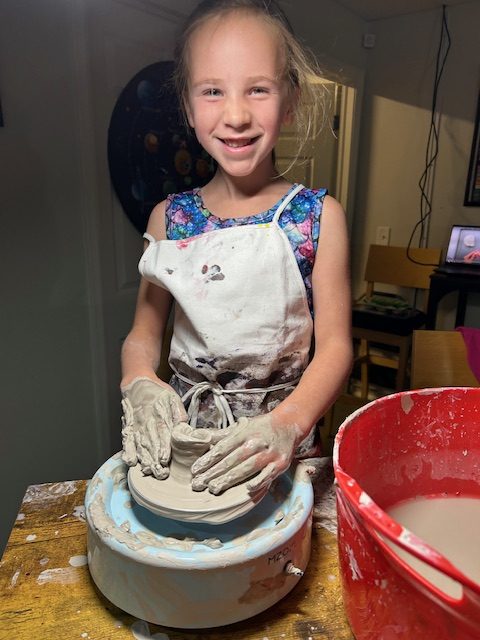 Pottery is a physical form of art. We will be working with self-drying clay to make things such as plates, bowls, mugs, jewelry holders, and anything else the students can imagine. We will be learning about different techniques such as throwing clay, pinching, slipping, coiling and glazing. At the end of the week, students will be able to take their pieces home along with the ability to use their knowledge to make more pieces on their own.
Pottery is a physical form of art. We will be working with self-drying clay to make things such as plates, bowls, mugs, jewelry holders, and anything else the students can imagine. We will be learning about different techniques such as throwing clay, pinching, slipping, coiling and glazing. At the end of the week, students will be able to take their pieces home along with the ability to use their knowledge to make more pieces on their own. -

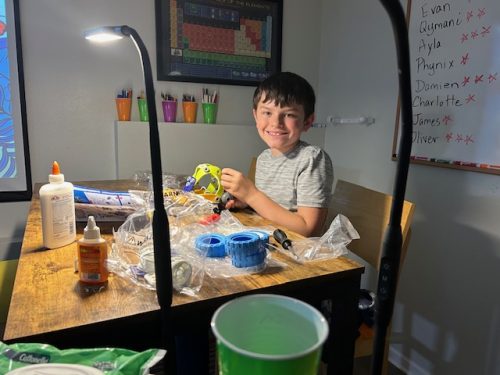 This class will excite kids who want to figure out how stuff works, build it and redesign it to make it even better. The design challenges are generally related to engineering designs, but can also be chemical, biological or mechanical. Students will decide on their design challenge and then construct their “machine” by mid-week. Then, they will test and redesign their project before taking it home.
This class will excite kids who want to figure out how stuff works, build it and redesign it to make it even better. The design challenges are generally related to engineering designs, but can also be chemical, biological or mechanical. Students will decide on their design challenge and then construct their “machine” by mid-week. Then, they will test and redesign their project before taking it home. -

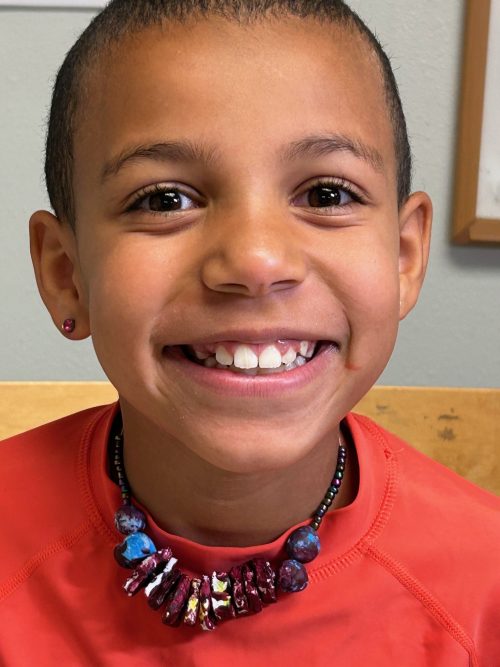 Jewelry Making: We will choose two kinds of jewelry to make, based on student choice (metal/wire, bead, macrame, leather, natural fibers, stone, glass, clay). Students will design their own creation and learn techniques for making their design). By the end of the week, students will have either something to wear or something to gift of their own creation.
Jewelry Making: We will choose two kinds of jewelry to make, based on student choice (metal/wire, bead, macrame, leather, natural fibers, stone, glass, clay). Students will design their own creation and learn techniques for making their design). By the end of the week, students will have either something to wear or something to gift of their own creation. -
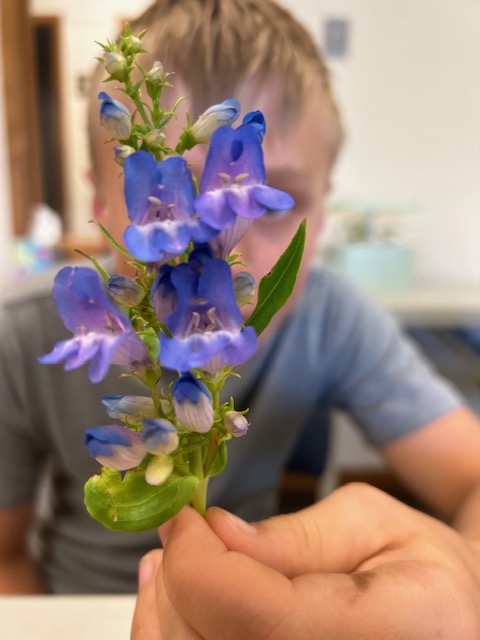
 Plants are the foundation of our survival, as a food source for us and for the animals we can eat, and as medicines to reduce pain, calm nerves, reduce inflammation, soothe a sunburn, and many more. Some plants can also cause severe health issues to humans and our pets. Students will build a medicinal plant book, include pictures or pressed specimens, identify their common and scientific names as well as their uses to heal or harm. At the end of the week, they get to keep their book, and hopefully add to it.
Plants are the foundation of our survival, as a food source for us and for the animals we can eat, and as medicines to reduce pain, calm nerves, reduce inflammation, soothe a sunburn, and many more. Some plants can also cause severe health issues to humans and our pets. Students will build a medicinal plant book, include pictures or pressed specimens, identify their common and scientific names as well as their uses to heal or harm. At the end of the week, they get to keep their book, and hopefully add to it. -
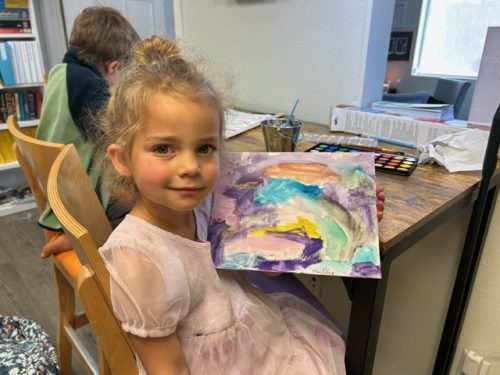
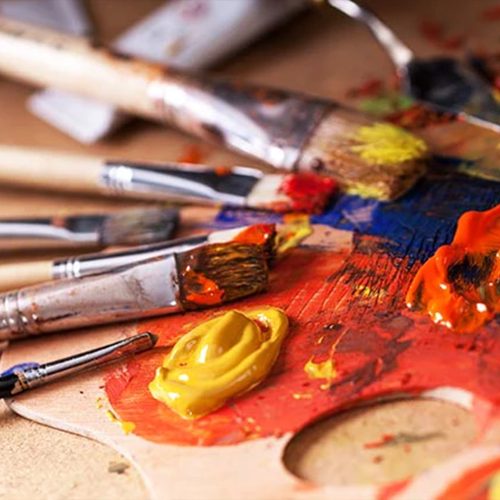 In this class we will learn different techniques of painting and drawing. We will learn what types of paint to use to create different pieces as well as what levels of graphite to use to achieve various styles of drawings. We will work with recreating objects realistically and abstractly using color theory. Students will be able to work alone or with another student to expand their knowledge and skills.
In this class we will learn different techniques of painting and drawing. We will learn what types of paint to use to create different pieces as well as what levels of graphite to use to achieve various styles of drawings. We will work with recreating objects realistically and abstractly using color theory. Students will be able to work alone or with another student to expand their knowledge and skills. -
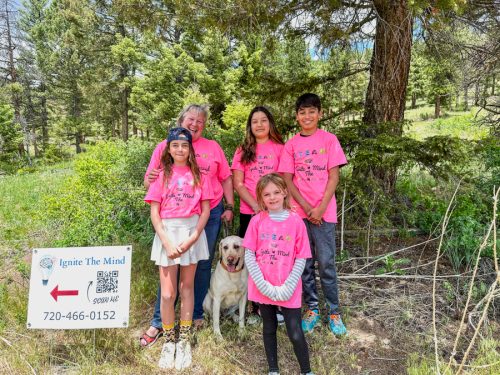
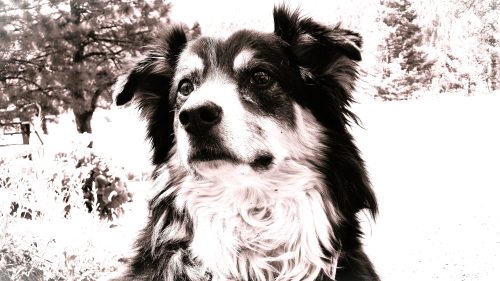 Photography is a way to capture a memory, a moment in time forever frozen. In this camp, students will learn how to enhance the beauty of a moment, draw the eye to a specific point, adjust the way the camera captures light, focus on an object, and how to edit photos to change the story the photo tells. We will work with a whole array of styles such as portrait, landscape, cityscape, architecture, and object focus. Along with that we will learn to see the world from a different view to find the beauty in the ordinary world.
Photography is a way to capture a memory, a moment in time forever frozen. In this camp, students will learn how to enhance the beauty of a moment, draw the eye to a specific point, adjust the way the camera captures light, focus on an object, and how to edit photos to change the story the photo tells. We will work with a whole array of styles such as portrait, landscape, cityscape, architecture, and object focus. Along with that we will learn to see the world from a different view to find the beauty in the ordinary world. -
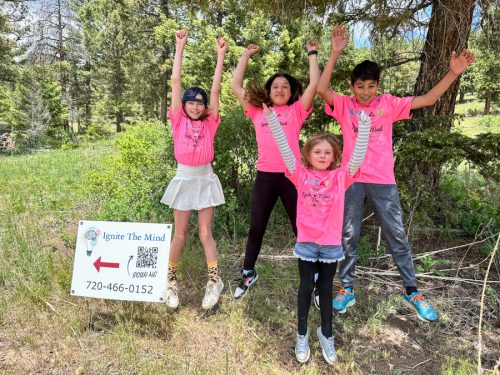
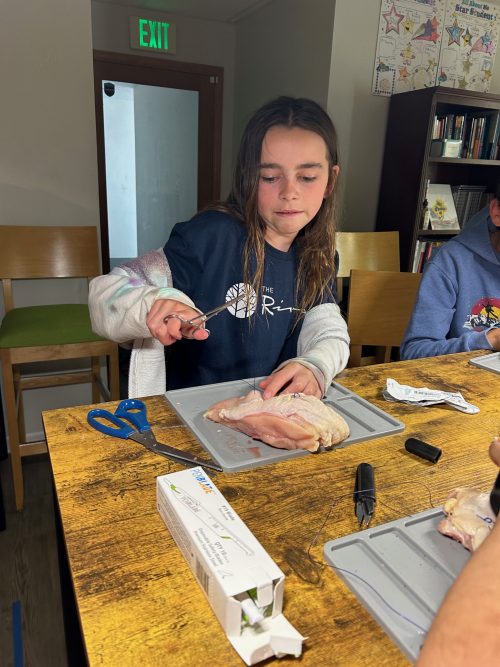 Veterinary medicine is an incredibly popular science for young people. It is also pretty challenging, as the patients veterinarians treat cannot tell them what hurts or how they feel. In this camp, students will learn about hematology (study of blood), parasitology (common skin, fecal and blood parasites) and microbiology (microscopic organisms which cause diseases). They will do case studies on small and large animal diagnosis of diseases based on symptoms and winners of the case-study contests will win prizes. They will also practice dissection, identifying muscle tissue, veins, arteries, bones and skin. Lastly, they will practice suturing techniques. Their drawings and case studies will be added to their notebook to use as a reference for their future studies.
Veterinary medicine is an incredibly popular science for young people. It is also pretty challenging, as the patients veterinarians treat cannot tell them what hurts or how they feel. In this camp, students will learn about hematology (study of blood), parasitology (common skin, fecal and blood parasites) and microbiology (microscopic organisms which cause diseases). They will do case studies on small and large animal diagnosis of diseases based on symptoms and winners of the case-study contests will win prizes. They will also practice dissection, identifying muscle tissue, veins, arteries, bones and skin. Lastly, they will practice suturing techniques. Their drawings and case studies will be added to their notebook to use as a reference for their future studies. -
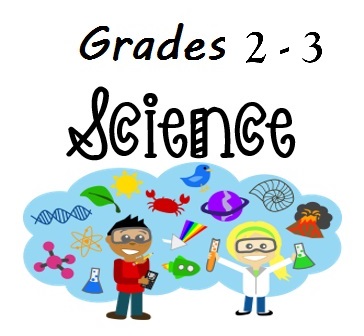 This class is for any student generally in grades 2 and 3 who wants to learn physical, life or Earth sciences from a licensed teacher who knows all of the cool things these subjects offer, as well as how to teach them to make them really fun and engaging. We will ensure that all student learn, practice and use CAS (Colorado Academic Standards) in science and math. Students will choose a particular phenomenon of interest which covers a great deal of the requirements of the Colorado Academic Standards and the Next Generation Science Standards.
This class is for any student generally in grades 2 and 3 who wants to learn physical, life or Earth sciences from a licensed teacher who knows all of the cool things these subjects offer, as well as how to teach them to make them really fun and engaging. We will ensure that all student learn, practice and use CAS (Colorado Academic Standards) in science and math. Students will choose a particular phenomenon of interest which covers a great deal of the requirements of the Colorado Academic Standards and the Next Generation Science Standards.- We'll start with Physical Science, discovering the unique properties of solids and liquids, and understand common properties, forms, and changes in matter and energy.
- Then, we'll explore Life Science how offspring of different animals have characteristics that are similar to but not exactly like their parents’ characteristics and how an organism is a living thing that has physical characteristics to help it survive
- Lastly, we'll look at Earth Systems and how Earth’s materials can be compared and classified based on their properties, as well as discover the processes and interactions of Earth's systems and the structure and dynamics of Earth and other objects in space
-
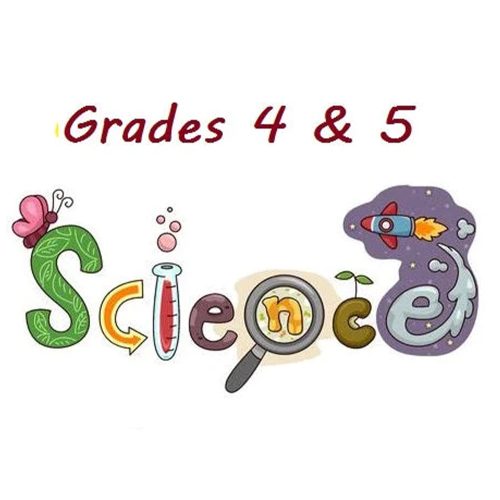 This class is for any student generally in grades 4 and 5 who wants to learn physical, life or Earth sciences from a licensed secondary education teacher who knows all of the cool things these subjects offer, as well as how to teach them to make them really fun and engaging. We can even apply grades to the student's work to report on transcripts if that is requested. Students will choose a particular phenomenon of interest which covers a great deal of the requirements of the Colorado Academic Standards and the Next Generation Science Standards.
This class is for any student generally in grades 4 and 5 who wants to learn physical, life or Earth sciences from a licensed secondary education teacher who knows all of the cool things these subjects offer, as well as how to teach them to make them really fun and engaging. We can even apply grades to the student's work to report on transcripts if that is requested. Students will choose a particular phenomenon of interest which covers a great deal of the requirements of the Colorado Academic Standards and the Next Generation Science Standards.- We'll start with Physical Science, where Energy comes in many forms such as light, heat, sound, magnetic, chemical, and electrical Earth is part of the solar system, which includes the Sun, Moon, and other bodies that orbit the Sun in predictable patterns that lead to observable paths of objects in the sky as seen from Earth
- Then, we'll explore Life Science where all living things share similar characteristics, but they also have differences that can be described and classified. We'll also compare fossils to each other or to living organisms, which reveals features of prehistoric environments and provides information about organisms today.
- Lastly, we'll look at Earth Systems where Earth is part of the solar system, which includes the Sun, Moon, and other bodies that orbit the Sun in predictable patterns that lead to observable paths of objects in the sky as seen from Earth.
-
 This class is for any middle school student who wants to learn physics, life or Earth sciences from a licensed secondary education teacher who knows all of the cool things these subjects offer, as well as how to teach them to make them really fun and engaging. We can even apply grades to the student's work to report on transcripts if that is requested. For the middle school standards, we'll choose one topic from each of the three sciences, or pick one of these sciences and dive deeply into its specifics. We will use or develop a phenomenon-based study using student questions to drive our investigations. Physical Science: Matter, atoms, density, waves (sound, electromagnetic, seismic) Life Science: Environments, habitats, populations, survival, ecosystems, human activities which are impacting these ecosystems, genes and traits Earth Systems Science: Volcanoes, weather, solar system, seasons, Moon phases
This class is for any middle school student who wants to learn physics, life or Earth sciences from a licensed secondary education teacher who knows all of the cool things these subjects offer, as well as how to teach them to make them really fun and engaging. We can even apply grades to the student's work to report on transcripts if that is requested. For the middle school standards, we'll choose one topic from each of the three sciences, or pick one of these sciences and dive deeply into its specifics. We will use or develop a phenomenon-based study using student questions to drive our investigations. Physical Science: Matter, atoms, density, waves (sound, electromagnetic, seismic) Life Science: Environments, habitats, populations, survival, ecosystems, human activities which are impacting these ecosystems, genes and traits Earth Systems Science: Volcanoes, weather, solar system, seasons, Moon phases -
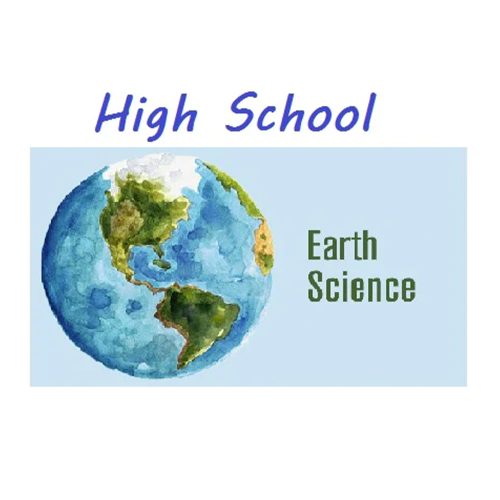 This class is for any high school student who wants to learn Earth Science (geology, astronomy, natural hazards) from a licensed secondary education teacher who knows all of the cool things these subjects offer, as well as how to teach them to make them really fun and engaging. We can even apply grades to the student's work to report on transcripts if that is requested. Students will choose a particular phenomenon of interest which covers a great deal of the requirements of the Colorado Academic Standards and the Next Generation Science Standards. High school Earth science covers the processes and interactions of Earth's systems and the structure and dynamics of Earth and other objects in space. This includes:
This class is for any high school student who wants to learn Earth Science (geology, astronomy, natural hazards) from a licensed secondary education teacher who knows all of the cool things these subjects offer, as well as how to teach them to make them really fun and engaging. We can even apply grades to the student's work to report on transcripts if that is requested. Students will choose a particular phenomenon of interest which covers a great deal of the requirements of the Colorado Academic Standards and the Next Generation Science Standards. High school Earth science covers the processes and interactions of Earth's systems and the structure and dynamics of Earth and other objects in space. This includes:- The history of the universe, solar system and Earth. As part of the solar system, Earth interacts with various extraterrestrial forces and energies such as gravity, solar phenomena, electromagnetic radiation, and impact events that influence the planet’s geosphere, atmosphere, and biosphere in a variety of ways.
- The theory of plate tectonics helps to explain geological, physical, and geographical features of Earth.
- Climate is the result of energy transfer among interactions of the atmosphere, hydrosphere, geosphere, and biosphere.
- There are costs, benefits, and consequences of exploration, development, and consumption of renewable and nonrenewable resources.
- The interaction of Earth's surface with water, air, gravity, and biological activity causes physical and chemical changes
- Natural hazards have local, national and global impacts such as volcanoes, earthquakes, tsunamis, hurricanes, and thunderstorms.
